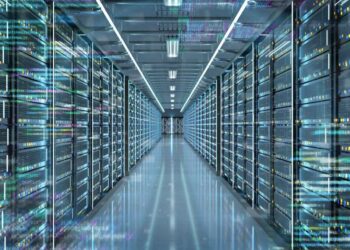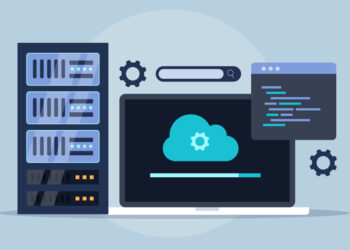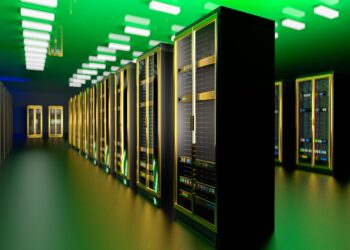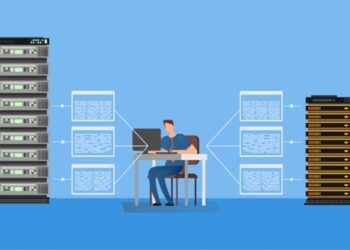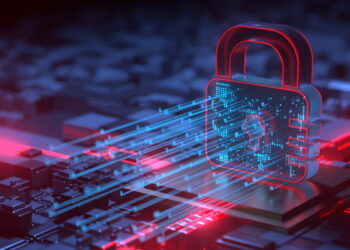The digital revolution of the past century has been built upon the bedrock of classical computing, where information is processed using bits that represent either a 0 or a 1. This paradigm has brought us the internet, smartphones, artificial intelligence, and countless technological marvels. However, as we push the boundaries of what classical computers can achieve, especially with highly complex problems in fields like materials science, drug discovery, financial modeling, and cryptography, we encounter inherent limitations. The sheer computational power required to tackle these challenges scales exponentially, quickly becoming intractable even for the most powerful supercomputers. This fundamental bottleneck is precisely what quantum computing aims to overcome. At its heart lies the quantum server, a machine poised to unlock computational capabilities previously thought impossible, heralding a future that promises to redefine problem-solving.
The Dawn of a New Computing Era

Quantum computing isn’t merely a faster version of classical computing; it represents a radical shift in how information is stored and processed. Instead of bits, quantum computers use qubits, which can exist in a superposition of both 0 and 1 simultaneously. Furthermore, qubits can become entangled, meaning their states are interconnected, even when physically separated. These two quantum phenomena—superposition and entanglement—form the basis for quantum computers’ ability to process vast amounts of information in parallel and solve problems that are computationally prohibitive for classical machines.
While still in its nascent stages, the development of quantum servers is accelerating at an unprecedented pace. Major technology giants, academic institutions, and innovative startups are pouring resources into building these machines, recognizing their potential to revolutionize industries, unlock scientific breakthroughs, and even reshape national security. The “future revealed” for quantum servers isn’t about immediate widespread adoption in every home or office, but rather about their emergence as specialized, powerful tools that will tackle humanity’s most complex challenges, creating solutions that impact every facet of our lives.
The Foundations of Quantum Servers
Understanding the future of quantum servers requires a grasp of the intricate science and engineering that underpin their operation.
A. Qubits
Unlike classical bits, qubits harness quantum mechanical properties to store and process information. Various physical systems can act as qubits:
- Superconducting Qubits: These are tiny electrical circuits cooled to near absolute zero (-273.15°C or 0 Kelvin), where they exhibit superconductivity. They are manipulated using microwave pulses. This is the approach favored by IBM and Google.
- Trapped Ion Qubits: Individual atoms are ionized and held in place by electromagnetic fields in a vacuum chamber. Lasers are used to manipulate their quantum states. This is a highly promising approach championed by companies like IonQ.
- Topological Qubits: A more theoretical approach (though Microsoft is actively pursuing it), where qubits are based on exotic quasi-particles that are more robust to environmental noise, potentially offering greater stability.
- Photonic Qubits: Using photons (particles of light) as qubits. This approach offers advantages in coherence time and entanglement over long distances.
- Quantum Dots: Semiconductor nanocrystals that can confine electrons, making them potential candidates for qubits.
The choice of qubit technology significantly impacts a quantum server’s architecture, environmental requirements, and error rates. The race to achieve more stable and numerous qubits is central to the future of quantum computing.
B. Quantum Gates and Algorithms
Just as classical computers use logic gates (AND, OR, NOT) to manipulate bits, quantum computers use quantum gates to manipulate qubits. These gates enable operations that leverage superposition and entanglement.
- Universal Gate Set: A set of quantum gates that can be combined to perform any possible quantum computation.
- Quantum Algorithms: Specific sequences of quantum gates designed to solve particular problems. Famous examples include:
- Shor’s Algorithm: Can efficiently factor large numbers, posing a significant threat to current public-key cryptography (e.g., RSA encryption).
- Grover’s Algorithm: Can speed up unstructured database searches quadratically compared to classical algorithms.
- Quantum Approximate Optimization Algorithm (QAOA): Used for optimization problems, with potential applications in logistics, finance, and materials science.
- Variational Quantum Eigensolver (VQE): Used in quantum chemistry to find the ground state energy of molecules.
The development of new, more efficient quantum algorithms is as crucial as the hardware itself in realizing the full potential of quantum servers.
C. Cryogenic Systems and Environmental Control
Many leading quantum computing architectures, particularly those using superconducting qubits, require extreme environmental conditions.
- Dilution Refrigerators: These complex systems cool qubits to temperatures colder than deep space (millikelvin range), which is essential to maintain their delicate quantum states and prevent decoherence (loss of quantum properties due to interaction with the environment).
- Vacuum Chambers: To isolate qubits from environmental particles and vibrations.
- Shielding: Protection from electromagnetic interference and cosmic rays.
The physical size, energy consumption, and complexity of these cryogenic systems are significant engineering challenges that impact the scalability and practical deployment of quantum servers. Innovations in cryogenics are vital for the future of these machines.
D. Quantum Error Correction (QEC)
Qubits are inherently fragile and susceptible to noise, leading to errors. This fragility is a major hurdle in building large-scale, fault-tolerant quantum computers.
- Decoherence: The loss of quantum coherence due to interaction with the environment.
- Error Correction Codes: Unlike classical error correction (which simply duplicates bits), quantum error correction involves encoding information across multiple physical qubits to protect against errors without directly measuring the qubits and destroying their superposition.
- Fault-Tolerant Quantum Computing: The ultimate goal of QEC is to build quantum computers that can operate reliably even with noisy physical qubits. This requires a significantly higher number of physical qubits per logical qubit.
The breakthroughs in QEC are paramount to moving quantum servers from noisy, intermediate-scale quantum (NISQ) devices to truly powerful, universal quantum computers.
Key Architectures and Deployment Models

The “quantum server” won’t be a single, uniform entity. Its future will likely involve diverse architectures and deployment models tailored for specific use cases.
E. On-Premise Quantum Servers
For highly sensitive data or specific research needs, some organizations may opt for on-premise quantum server deployments.
- Dedicated Research Facilities: Large corporations, government labs, and universities might host their own quantum systems for proprietary research, particularly in areas like drug discovery or materials science where intellectual property is critical.
- Hybrid Quantum-Classical Systems: Integrating a quantum co-processor directly into a traditional HPC data center, allowing seamless interaction between quantum and classical workloads.
- Advantages: Maximum control over security, data, and access. No reliance on external network connectivity for critical computations.
- Challenges: Extremely high cost of acquisition and maintenance, specialized personnel requirements, significant infrastructure (power, cooling, shielding).
F. Cloud-Based Quantum Computing (Quantum-as-a-Service)
The most accessible and likely dominant model for quantum server access will be through the cloud.
- Quantum-as-a-Service (QaaS): Cloud providers (IBM Quantum, Azure Quantum, Google Cloud Quantum AI) offer access to their quantum hardware and software development kits (SDKs) over the internet. Users can write quantum programs and run them on remote quantum servers.
- Hybrid Cloud Quantum: Combining on-premise classical computing with cloud-based quantum servers, allowing large datasets to be pre-processed classically and then sent to the quantum server for specific, quantum-advantaged calculations.
- Advantages: Democratizes access to powerful quantum hardware, reduces capital expenditure for users, leverages the cloud provider’s expertise in maintenance and environmental control.
- Challenges: Network latency, data transfer overhead, security of data in transit, and reliance on the cloud provider’s infrastructure.
G. Quantum Network and Interconnects
As quantum servers become more powerful, the ability to connect them will be crucial.
- Quantum Internet: A theoretical future network capable of transmitting quantum information (qubits) securely over long distances, enabling applications like highly secure communication (quantum key distribution) and distributed quantum computing.
- Quantum Interconnects: Within a quantum server or between adjacent quantum systems, these allow for the transfer of quantum information, critical for scaling up quantum processors and linking multiple quantum modules.
- Advantages: Enables distributed quantum computation, enhances security through quantum cryptography, and allows for shared quantum resources.
Transformative Applications of Quantum Servers
The true “future revealed” for quantum servers lies in their capacity to solve problems currently intractable for classical computers, leading to breakthroughs across diverse sectors.
H. Drug Discovery and Materials Science
Simulating molecular interactions at the quantum level is immensely complex for classical computers. Quantum servers can:
- Design New Drugs: Simulate how drug molecules bind to proteins, accelerating the discovery of new pharmaceuticals with higher efficacy and fewer side effects.
- Develop Novel Materials: Design materials with unprecedented properties (e.g., superconductors at room temperature, highly efficient catalysts) by simulating their quantum behavior.
- Optimize Chemical Reactions: Find more efficient pathways for industrial chemical processes, reducing waste and energy consumption.
I. Financial Modeling and Optimization
Quantum servers can enhance financial analysis and risk management.
- Portfolio Optimization: Optimize investment portfolios by considering a vast number of variables and constraints, potentially leading to higher returns and lower risk.
- Fraud Detection: Analyze complex financial transaction patterns to detect fraud more effectively than classical algorithms.
- Derivatives Pricing: Accurately price complex financial derivatives, even in volatile markets.
- Market Prediction: Potentially identify subtle patterns in market data that are invisible to classical analysis.
J. Cryptography and Cybersecurity
Quantum computing presents both a threat and an opportunity for cybersecurity.
- Breaking Current Encryption: Shor’s algorithm can break widely used public-key encryption standards like RSA and ECC, necessitating the development of post-quantum cryptography (PQC).
- Quantum Key Distribution (QKD): Quantum mechanics can be used to create intrinsically secure communication channels, where any attempt at eavesdropping immediately alters the quantum state, making the intrusion detectable.
- Enhanced Security Protocols: New quantum-resistant algorithms will be crucial for protecting data in a post-quantum world. Quantum servers will be vital for developing and testing these robust solutions.
K. Logistics and Optimization
Many real-world problems involve finding the optimal solution among an exponentially large number of possibilities.
- Supply Chain Optimization: Optimize complex supply chains for efficiency, cost reduction, and resilience against disruptions.
- Route Optimization: Find the most efficient routes for delivery services, transportation networks, and even airline scheduling.
- Resource Allocation: Optimize the allocation of limited resources in various scenarios, from manufacturing to disaster relief.
L. Artificial Intelligence and Machine Learning
Quantum computing can supercharge certain aspects of AI and ML.
- Quantum Machine Learning (QML): Develop new quantum algorithms for machine learning tasks, potentially accelerating training times, improving pattern recognition, and handling higher-dimensional datasets.
- Enhanced Optimization for AI: Use quantum algorithms to optimize the parameters of deep learning models.
- Quantum Generative Models: Create new types of generative AI models with unique capabilities.
- Data Analysis: Faster processing and analysis of large, complex datasets for insights that are beyond classical capabilities.
Challenges and Milestones
While the potential of quantum servers is immense, significant challenges must be overcome before they become broadly practical.
M. Scalability and Qubit Coherence
- Increasing Qubit Count: Building quantum servers with hundreds or thousands of high-quality, interconnected qubits is a major engineering feat.
- Maintaining Coherence: The longer qubits maintain their quantum state (coherence time), the more complex computations they can perform. Protecting qubits from environmental noise is an ongoing challenge.
N. Error Rates and Fault Tolerance
- High Error Rates: Current quantum computers are “noisy,” meaning qubits are prone to errors. Reducing these error rates and implementing effective quantum error correction is paramount for reliable computation.
- Physical Qubits vs. Logical Qubits: Achieving one “logical qubit” (a robust, error-corrected qubit) requires many “physical qubits” (e.g., thousands for superconducting qubits). This gap needs to shrink dramatically.
O. Programming and Software Development
- Quantum Algorithm Development: Discovering and refining new quantum algorithms that genuinely offer a “quantum advantage” (outperforming classical computers) is an active area of research.
- Software Tools and Frameworks: Developing user-friendly software development kits (SDKs), compilers, and programming languages that abstract away the complexity of quantum hardware.
- Quantum Developers: A significant shortage of skilled quantum programmers and researchers.
P. Integration with Classical Computing
- Hybrid Architectures: The future will likely involve tight integration between quantum and classical processors, where each handles the tasks they are best suited for. Efficient communication interfaces are crucial.
- Workflow Integration: Developing seamless workflows that allow scientists and engineers to easily leverage quantum servers within their existing classical computing environments.
Q. Cost and Accessibility
- High Costs: Current quantum servers are incredibly expensive to build, operate, and maintain. Costs need to come down significantly for broader accessibility.
- Energy Consumption: While the quantum part itself might be low power, the cryogenics and classical control systems consume substantial energy.
- Democratization of Access: Cloud platforms are key to making quantum computing accessible, but equitable access to powerful quantum resources will remain a challenge.
Conclusion
The quantum server future revealed is one of profound transformation, not just incremental improvement. These machines, built on the enigmatic principles of superposition and entanglement, hold the key to solving some of humanity’s most complex and intractable problems. While the journey from noisy, small-scale devices to fault-tolerant, universal quantum computers is fraught with formidable scientific and engineering challenges, the accelerating pace of research and investment suggests a future where quantum servers will be an indispensable part of our advanced computational toolkit.
They won’t replace classical computers but rather augment them, acting as specialized accelerators for tasks where their unique capabilities provide an undeniable advantage. From revolutionizing drug discovery and materials science to securing our digital future and optimizing global logistics, the impact of quantum servers will be far-reaching and transformative. The coming decades will witness the transition of quantum computing from a theoretical curiosity to a powerful, albeit specialized, reality, shaping industries, driving scientific breakthroughs, and ultimately, unlocking a new era of computational possibility. We are on the cusp of a quantum leap, and the future of computation will never be the same.


